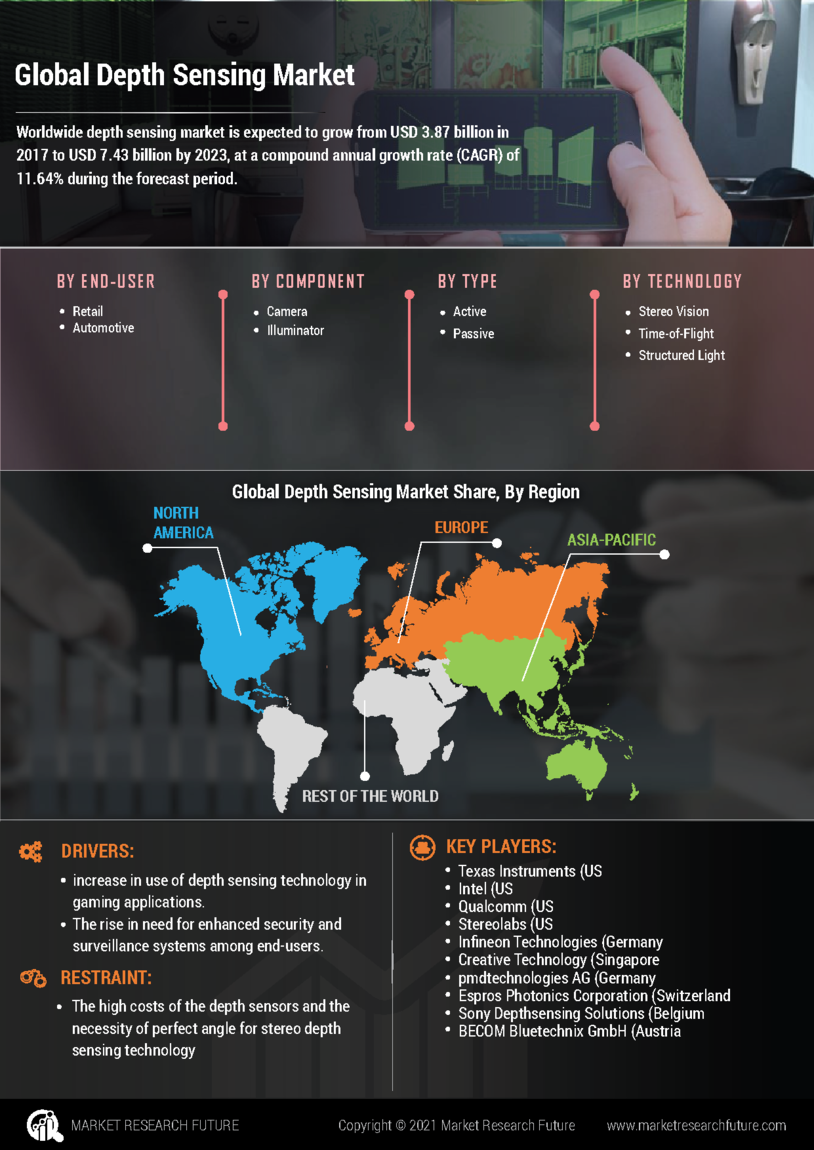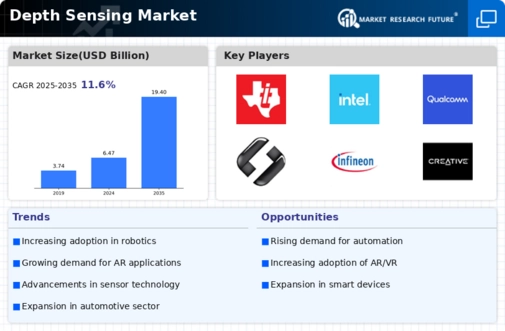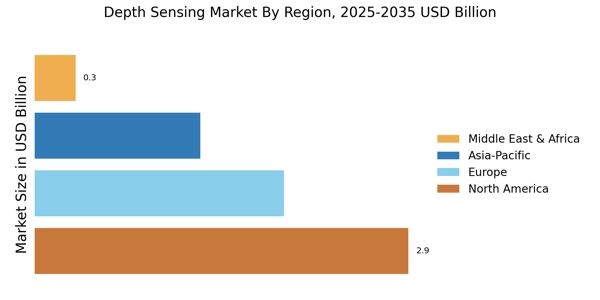Growing Adoption in Robotics
The Depth Sensing Market is witnessing a growing adoption of depth sensing technologies in robotics, which is transforming various industrial processes. Robots equipped with depth sensors can navigate complex environments, perform tasks with greater precision, and enhance operational efficiency. The market for robotic applications utilizing depth sensing is expected to expand significantly, with estimates suggesting a compound annual growth rate (CAGR) of over 15% through 2027. This trend is driven by the increasing need for automation in manufacturing, logistics, and service industries. As companies seek to improve productivity and reduce costs, the integration of depth sensing in robotics is likely to become a critical component of their operational strategies, thereby propelling the Depth Sensing Market forward.
Advancements in Sensor Technology
The Depth Sensing Market is experiencing a surge in advancements in sensor technology, which enhances the accuracy and efficiency of depth sensing applications. Innovations such as LiDAR and structured light sensors are becoming increasingly prevalent, allowing for more precise measurements in various sectors. For instance, the integration of these technologies in automotive applications is projected to grow, with the market for automotive depth sensors expected to reach USD 2 billion by 2026. This growth is indicative of the rising demand for advanced driver-assistance systems (ADAS) and autonomous vehicles, which rely heavily on depth sensing capabilities. As these technologies continue to evolve, they are likely to drive further investment and development within the Depth Sensing Market.
Rising Demand in Automotive Sector
The Depth Sensing Market is experiencing a notable rise in demand within the automotive sector, driven by the increasing focus on safety and automation. Depth sensing technologies are integral to advanced driver-assistance systems (ADAS), which enhance vehicle safety and facilitate autonomous driving. The automotive depth sensing market is projected to grow significantly, with estimates indicating a value of USD 3 billion by 2026. This growth is fueled by regulatory pressures for improved safety standards and consumer demand for innovative features. As automotive manufacturers continue to integrate depth sensing technologies into their vehicles, the Depth Sensing Market is likely to see sustained growth and innovation.
Emergence of Augmented and Virtual Reality
The Depth Sensing Market is significantly influenced by the emergence of augmented reality (AR) and virtual reality (VR) technologies. These applications require precise depth sensing to create immersive experiences, which has led to a surge in demand for depth sensors. The AR and VR market is projected to reach USD 300 billion by 2025, with depth sensing playing a crucial role in enhancing user interaction and experience. Companies are increasingly investing in depth sensing technologies to improve the realism and functionality of their AR and VR products. This trend indicates a robust growth trajectory for the Depth Sensing Market, as it aligns with the broader shift towards more interactive and engaging digital experiences.
Increased Investment in Smart Home Devices
The Depth Sensing Market is benefiting from increased investment in smart home devices, which often incorporate depth sensing technologies for enhanced functionality. Devices such as smart cameras, security systems, and home automation products utilize depth sensors to improve user experience and security features. The smart home market is expected to grow to USD 174 billion by 2025, with depth sensing being a key enabler of this growth. As consumers seek more integrated and intelligent home solutions, manufacturers are likely to prioritize depth sensing capabilities in their product development. This trend suggests a promising outlook for the Depth Sensing Market, as it aligns with the growing consumer preference for smart technology.

















Leave a Comment